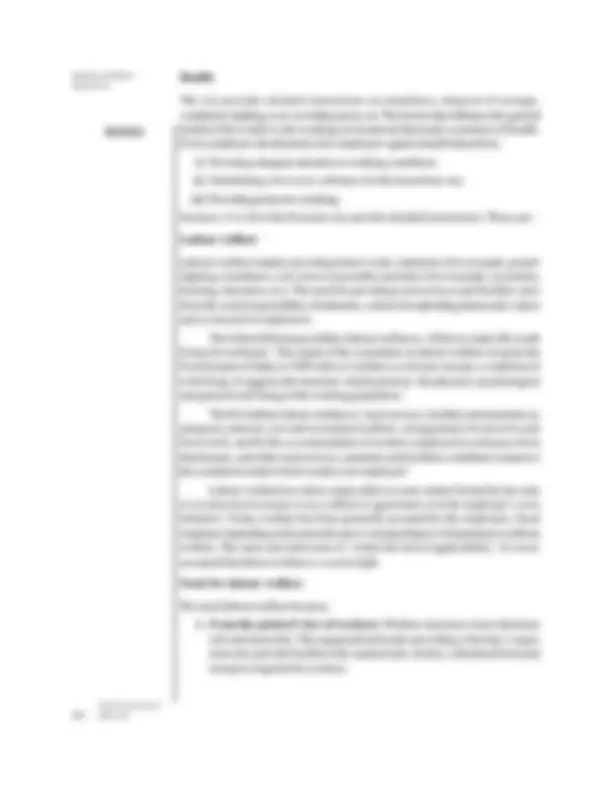



Study with the several resources on Docsity

Earn points by helping other students or get them with a premium plan


Prepare for your exams
Study with the several resources on Docsity

Earn points to download
Earn points by helping other students or get them with a premium plan
Community
Ask the community for help and clear up your study doubts
Discover the best universities in your country according to Docsity users
Free resources
Download our free guides on studying techniques, anxiety management strategies, and thesis advice from Docsity tutors
Human Resource Management (HRM) is a strategic and comprehensive approach to managing people within an organisation. It involves recruiting, hiring, training, evaluating, and rewarding employees to maximise their performance and align with the organisation’s goals. HRM also ensures compliance with labour laws, fosters a positive workplace culture, and supports employee development and well-being. By managing workforce planning, performance, compensation, and employee relations, HRM plays a vital role in organisational success. In today’s dynamic business environment, HRM is increasingly data-driven and aligned with long-term strategic planning, making it an essential function in both large corporations and small enterprises.
Typology: Lecture notes
1 / 2

This page cannot be seen from the preview
Don't miss anything!


Self-Instructional Material 141
Employee Welfare, Separation industrial establishment.’According to the Factories Act, industrial accident is ‘an occurrence in an industrial establishment causing bodily injury to a person which makes him unfit to resume his duties in the next 48 hours.’
Causes of accidents: Accidents are usually the result of a combination of factors. According to safety experts there are three basic causes. These are:
Accident prevention
According to the National Safety Council, USA, accident prevention depends on three E’s.
Engineering – the job should be engineered for safety. Employees – employees should be educated in safe procedure, and Enforcing safety – safety rules should be properly enforced.
Accident prevention can be achieved through two basic activities:
Occupational diseases
Occupational diseases are the result of physical conditions and the presence of industrial poisonous and non-poisonous dust in the atmosphere. They usually develop over an extended period of time. They are slow and generally cumulative in their effect. The diseases are the result of constant exposure to the influence of toxic substances of micro-organisms, of air-borne contaminants and stress- producing elements.
Provisions under the Factories Act, 1948
The Factories Act, 1948, provides for health safety and welfare. We explain the relevant sections pertaining to health and safety of workers:
Employee Welfare, Separation
Self-Instructional 142 Material
Health
The Act provides detailed instructions on cleanliness, disposal of wastage, ventilation, lighting, over-crowding and so on. The factors that influence the general health of the worker is the working environment that tends to produce ill health. Every employer should protect his employees against health hazards by: (i) Devoting adequate attention to working conditions. (ii) Substituting a less toxic substance for the hazardous one. (iii) Providing protective clothing. Sections 11 to 20 of the Factories Act provide detailed instructions. These are:
Labour welfare
Labour welfare implies providing better work conditions (for example, proper lighting, cleanliness, low noise) reasonable amenities (for example, recreation, housing, education, etc). The need for providing such services and facilities arise from the social responsibility of industries, a desire for upholding democratic values and a concern for employees. The Oxford Dictionary defines labour welfare as ‘efforts to make life worth living for workmen’. The report of the committee on labour welfare set up by the Government of India in 1969 refers to welfare as a broad concept, a condition of well-being. It suggests the measures which promote ‘the physical, psychological and general well-being of the working population.’ The ILO defines labour welfare as ‘such services, facilities and amenities as adequate canteens, rest and recreation facilities, arrangements for travel to and from work, and for the accommodation of workers employed at a distance from their houses, and other such services, amenities and facilities contribute to improve the conditions under which workers are employed.’ Labour welfare have their origin either in some statute formed by the state or in some local custom or in a collective agreement or in the employer’s own initiative. Today, welfare has been generally accepted by the employers. Each employer depending on his priorities gives varying degrees of importance to labour welfare. The state only intervenes to ‘widen the area of applicability’. It is now accepted that labour welfare is a social right. Need for labour welfare
We need labour welfare because:
1. From the point of view of workers: Welfare measures must eliminate risk and insecurity. The organization besides providing a fair day’s wages must also provide facilities like medical aid, crèches, subsidized food and transport required by workers.